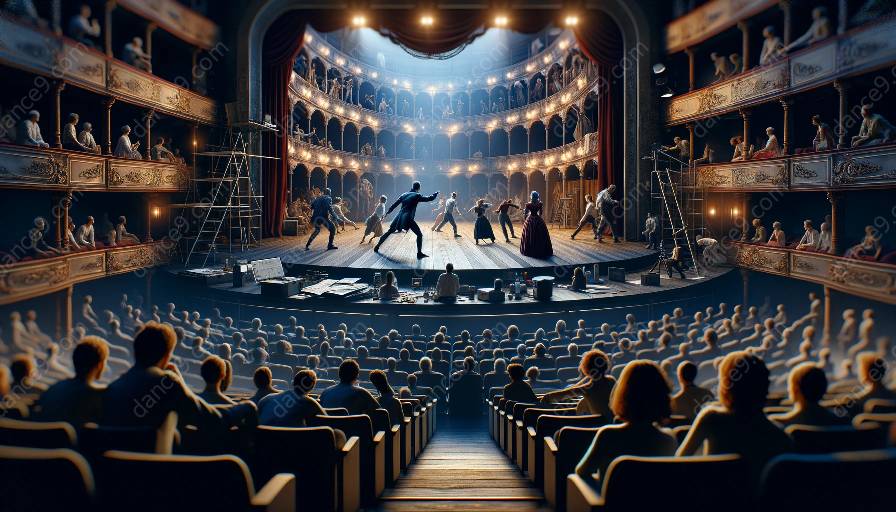The historical evolution of choreography in theatre is a fascinating journey that reflects the ever-changing dynamics of performance art. From its earliest forms to its contemporary manifestations, choreography in theatre has played a vital role in shaping the overall aesthetic and narrative of theatrical productions.
The Role of the Choreographer in Theatre
The choreographer is a key artistic figure in theatre, responsible for creating and coordinating the movement and dance sequences that enhance the storytelling and emotional resonance of a production. Throughout history, choreographers have deftly melded their creative vision with the director's and playwright's intentions, enriching the theatrical experience for audiences.
Choreography: Significance and Evolution
Choreography, as an art form, has evolved alongside the changing cultural, social, and artistic landscapes. The early origins of choreography in theatre can be traced back to ancient rituals and religious ceremonies, where stylized movements were used to convey narratives and express communal emotions. As theatrical traditions developed, choreography became integral to the depiction of characters, emotions, and themes, ultimately contributing to the overall spectacle of performances.
Historical Milestones
Throughout history, choreography in theatre has seen significant milestones that have shaped its evolution. The Renaissance period witnessed the emergence of courtly dance forms, which laid the groundwork for the elaborate dance interludes in stage productions. The 20th century heralded a revolution in choreography, with visionaries like Martha Graham and George Balanchine pioneering innovative movement vocabularies that reshaped the boundaries of theatrical dance.
Choreography in Contemporary Theatre
In contemporary theatre, choreography has expanded its reach, encompassing a diverse range of styles and influences. From avant-garde experimental productions to mainstream musicals, choreographers continue to push artistic boundaries, blending traditional techniques with modern innovation. The integration of multimedia elements, technology, and interdisciplinary collaborations has further expanded the possibilities for choreographic expression in theatre.
Influence on Audience Experience
The impact of choreography on the audience experience cannot be overstated. Thoughtfully crafted movement sequences have the power to evoke profound emotional responses, transport audiences to different worlds, and offer unique perspectives on the human condition. Choreographers play a pivotal role in shaping the visual and kinetic dimensions of a theatrical performance, creating indelible moments of beauty, tension, and catharsis.
Conclusion
The historical evolution of choreography in theatre is a testament to its enduring significance as a transformative and integral component of theatrical expression. As the art form continues to evolve, choreographers remain at the forefront of innovation, infusing performances with movement dynamics that captivate, inspire, and resonate with audiences across diverse cultural landscapes.






































